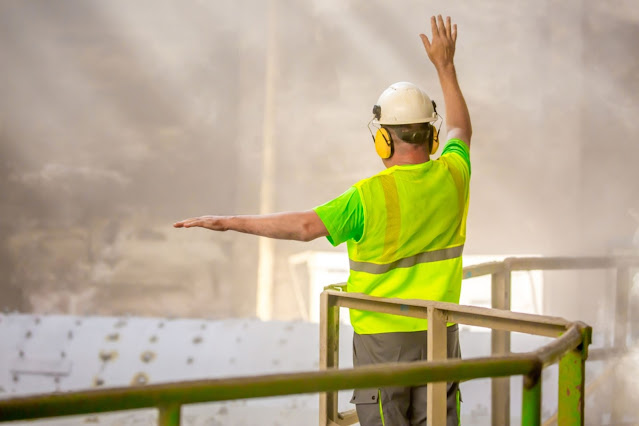Four Main Signaling Techniques When Cranes Are Operated - Construction Safety
On a construction site, cranes are the most efficient means of moving heavy loads and using crane hand signals correctly is essential for keeping everyone safe. A signal person can safely instruct a crane operator to raise and lower the boom, hoist and lower the load, or move the load horizontally after learning the fundamental crane hand signals. Of course, they can also direct the operator to stop the crane in an emergency.
The Occupational Safety and Health Administration, which is very important, stipulates that anyone designated as a signal person must meet certain requirements and be assessed by a qualified person. According to the Bureau of Labor Statistics, crane-related deaths decreased to their lowest recorded level in 2017 as a result of these regulations and a commitment to standardized signals.
To operate safely, a crane operator frequently needs a signal person. There must be a signal person available:
- when the operator cannot see the entire point of operation, which refers to the path the load takes or the location where it is placed.
- when the machine is moving, and the operator can't see in the direction it's moving; or
- when the operator or the person carrying the load determines that it is required due to site-specific safety concerns.
The ability to transmit signals between the operator and signal person must be kept up while performing operations that require signals. The operator must safely halt operations if that capability is ever interrupted in order to wait for a proper signal to be given and understood.
A crane or derrick may only be signaled by one person at a time, but anyone may signal an emergency stop.
It is acceptable to use hand, voice, audible, or new signals. The signals that are used and the methods by which they are transmitted to the operator (like direct line of sight, video, radio, etc.) must be suitable for the site's conditions. The signal person must always give instructions to the operator from their point of view.
On construction sites, this is the signalling technique used the most. The Standard Method must be followed when hand signals are used.
Hand signal charts must be either prominently displayed near the hoisting operation or posted on the equipment itself.
These are components communicated verbally, either amplified or not, orally transmitted electronically. The operator, signal person, and lift director (if there is one) must be present if this type of signal is used.
One) must speak with one another and decide on the voice signals to be used before operations can start.
These are sounds, such as those produced by a bell, horn, or whistle, that serve as signals. The signal person and operator must have a thorough understanding of the meaning of the signals being used, just like with other types of signals.
As long as it complies with all OSHA signaling requirements, new signaling techniques, such as video monitoring, may be used when appropriate.
In conclusion, crane hand signals are a crucial component of a construction site's efficient and safe operation. The different signaling techniques must be understood by both the signal person and the operator. These signals can help keep everyone on the jobsite safe and help avert accidents and fatalities when used properly. Every employer should make sure that the operators and signal personnel they employ have received comprehensive training in the use of hand signals and other signaling techniques. Additionally, employers are responsible for ensuring that all workers who may be exposed to risks associated with cranes adhere to all OSHA safety guidelines and directives when doing so. This can contribute to the creation of a safe environment where no one will suffer harm.
For any further query or assistance required, please feel free to contact or revert back. We'll be glad to assist you.
Ms. Divyasree - HSE Adviser | Aim Vision Safety Training & Consulting
For any further query or assistance required, please feel free to contact or revert back. We'll be glad to assist you.
Ms. Divyasree - HSE Adviser | Aim Vision Safety Training & Consulting
t: 044 42140492
m: 91 9445508458
e: Admin@aimvisionsafety.co.in
286, First Floor,GST Road,
Chromepet, Chennai 600 044 (Above Vodafone Showroom)
t: 044 42140492
m: 91 9445508458
e: Admin@aimvisionsafety.co.in
286, First Floor,GST Road,
Chromepet, Chennai 600 044 (Above Vodafone Showroom)

Comments
Post a Comment